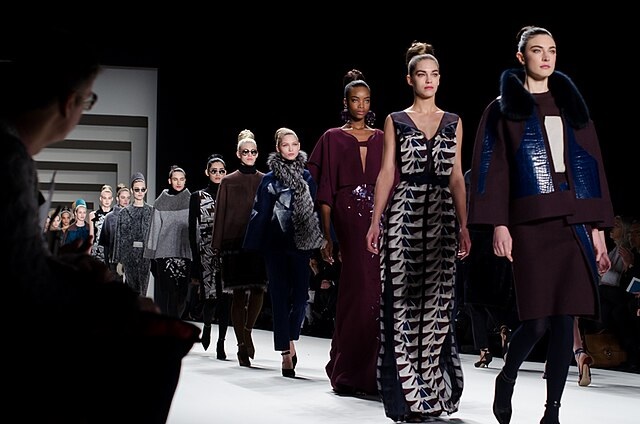Introduction to Fashion
Fashion is more than clothing—it’s an ever-evolving language of self-expression and creativity that bridges cultures, influences lifestyles, and shapes identities. From historical trends to contemporary style, fashion captures a moment in time, reflecting societal values, preferences, and changes. As designers push boundaries and technology fuels new innovations, fashion continues to inspire and challenge norms, remaining a powerful force across the globe.
Table of Contents
The Evolution of Fashion
The Roots of Fashion
Fashion’s origins stretch back thousands of years, with people using clothing and accessories to distinguish social status, tribe, and beliefs. Early civilizations like Ancient Egypt, Mesopotamia, and the Roman Empire developed unique styles that reflected their respective cultures. The Renaissance and Baroque periods saw the rise of ornate, structured attire, with fashion becoming an essential aspect of European court life.
Fashion as Status and Identity in Early Societies
In ancient cultures, the materials, colors, and styles people wore were deeply tied to their social rank and role within their communities. High-quality fabrics and dyes were often reserved for royalty or the elite. For instance, the color purple was particularly revered in ancient Rome and only worn by emperors.
The Birth of Haute Couture in the 19th Century
In the 19th century, Paris emerged as the epicenter of fashion. Charles Frederick Worth, often regarded as the father of haute couture, created bespoke garments for the aristocracy, setting the stage for what would become a booming fashion industry. This era established Paris as a fashion capital, a title it maintains today.
Fashion as a Reflection of Cultural Shifts
The Roaring Twenties and Liberation
The 1920s marked a revolutionary shift in fashion, with flapper dresses, shorter hemlines, and looser silhouettes symbolizing women’s newfound freedom and independence. This decade also witnessed the rise of Coco Chanel, whose designs championed simplicity, elegance, and liberation from corsets.
The 1960s and the Rise of Counterculture Fashion
The 1960s brought forward styles that challenged traditional fashion. Bold prints, mini-skirts, bell-bottoms, and tie-dye embodied the rebellious spirit of the youth. This era also celebrated influential designers like Yves Saint Laurent and Mary Quant, whose designs championed self-expression and defied conventional aesthetics.
1980s Excess and Power Dressing
The 1980s embraced boldness, with oversized silhouettes, shoulder pads, and neon colors dominating fashion. Known as the era of power dressing, this period saw the rise of influential designers such as Giorgio Armani, whose structured suits became synonymous with corporate power and ambition.
The Role of Technology in Modern Fashion
Digital Transformation in the Fashion Industry
Technology has transformed the way fashion is created, consumed, and experienced. From 3D printing to artificial intelligence, tech innovations have given designers and brands new tools to push boundaries and cater to a broader audience.
The Impact of Social Media
Social media has become a critical factor in fashion, with platforms like Instagram, Pinterest, and TikTok allowing designers, influencers, and brands to connect directly with consumers. Trends that once took years to spread now gain momentum in days or even hours, shaping what’s in style at unprecedented speeds.
Sustainable Fashion and Ethical Innovations
As awareness of environmental issues grows, sustainability has become a central focus in the fashion industry. Brands are increasingly using recycled materials, implementing ethical production methods, and offering second-hand or rental options. Companies like Patagonia and Stella McCartney have become pioneers in eco-friendly fashion, paving the way for a more sustainable future.
Fashion Styles Through the Ages
Defining Fashion Eras
Each decade has given birth to unique fashion trends that mirror the values, struggles, and celebrations of that time. Let’s take a look at some iconic fashion styles over the last century.
1920s – The Age of Jazz and Flapper Dresses
In the post-World War I era, the 1920s symbolized freedom and prosperity. Women embraced shorter hemlines, loose-fitting dresses, and daring silhouettes as a mark of liberation.
1950s – The Return to Elegance
The 1950s marked a return to classic elegance, with Christian Dior’s “New Look” emphasizing hourglass silhouettes, full skirts, and a feminine allure. This decade celebrated an idealized form of femininity, with actresses like Marilyn Monroe epitomizing this glamorous look.
1970s – Bohemian Spirit and Disco Fever
The 1970s witnessed a blend of bohemian and disco styles, as people embraced individuality and freedom. Flowy dresses, fringe jackets, platform shoes, and bell-bottom jeans became iconic during this era.
1990s – Grunge and Minimalism
The 1990s gave birth to the grunge look, popularized by bands like Nirvana. People began embracing laid-back, unpolished looks with flannel shirts, ripped jeans, and minimalist outfits. Designers like Calvin Klein championed minimalism, creating clean, simple, and effortlessly chic looks.
The Influence of Celebrity and Streetwear
The Rise of Celebrity-Endorsed Fashion
With the rise of Hollywood and popular music, celebrities became powerful influencers of style. Stars like Audrey Hepburn, Michael Jackson, and Madonna have left lasting imprints on fashion, inspiring trends that transcend generations.
Streetwear and Its Global Impact
Streetwear has grown from a niche style into a global phenomenon, with brands like Supreme, Off-White, and Yeezy creating demand for casual, trendy apparel. Born from urban culture, hip-hop, and skateboarding, streetwear reflects the influence of subcultures, blending functionality with style.
The Role of Fashion Influencers
In the digital age, fashion influencers have become key players in the industry. Social media personalities, particularly on Instagram and TikTok, shape fashion trends and brand perceptions. Their reach and influence allow them to showcase personal style, introduce trends, and promote sustainable and niche brands.
Sustainable Fashion: A Path to Responsible Style
The Environmental Impact of Fashion
The fashion industry has faced growing scrutiny for its environmental footprint, as the production of textiles and fast fashion contributes significantly to pollution, water wastage, and carbon emissions. In response, a push for sustainable fashion practices has emerged, aiming to reduce these impacts through eco-friendly materials, recycling, and ethical manufacturing.
Materials and Production Innovations
From biodegradable materials to recycled fabrics, brands are exploring innovative options to lessen their impact on the planet. Vegan leather, organic cotton, and bamboo fabrics are becoming popular alternatives to traditional materials.
Second-Hand and Circular Fashion
The shift towards second-hand shopping, clothing rental, and the circular economy encourages consumers to extend the life of their garments. Thrift shopping and online resale platforms like ThredUp and Depop promote the reuse of clothing, allowing consumers to find unique items while reducing waste.
The Future of Fashion
Fashion and the Metaverse
The fashion industry is embracing digital spaces, from virtual try-ons to NFTs (non-fungible tokens) and digital fashion collections. High-fashion brands like Gucci and Balenciaga are exploring collaborations within the metaverse, allowing users to dress their avatars in luxury designs.
Artificial Intelligence in Design and Retail
AI technology is revolutionizing the fashion industry by enabling personalized shopping experiences, optimizing inventory management, and forecasting trends. AI-driven designs offer fresh perspectives, with algorithms creating patterns and styles that complement a brand’s aesthetic.
3D Printing and Customization
3D printing is unlocking new possibilities in fashion design, offering unparalleled customization, reducing material waste, and allowing brands to experiment with innovative patterns and textures. Customization has become a major trend, with consumers seeking unique pieces that reflect their personality.
Conclusion: The Timeless Power of Fashion
Fashion is a dynamic form of expression that transcends borders, adapts to societal changes, and reflects our deepest values and aspirations. As it continues to evolve, fashion shapes who we are, influences how we see the world, and allows us to tell our unique stories through style.
Today, with sustainability, technology, and individuality driving the future of fashion, the possibilities are boundless. The journey of fashion is far from over—it’s a narrative that adapts, reinvents, and continually surprises, offering a glimpse into the future of creativity, culture, and humanity.


